
Andreas Cornelsen transports some tasty cargo
Story
Work, sweet work: Andreas Cornelsen transports cocoa beans to the chocolate factory.
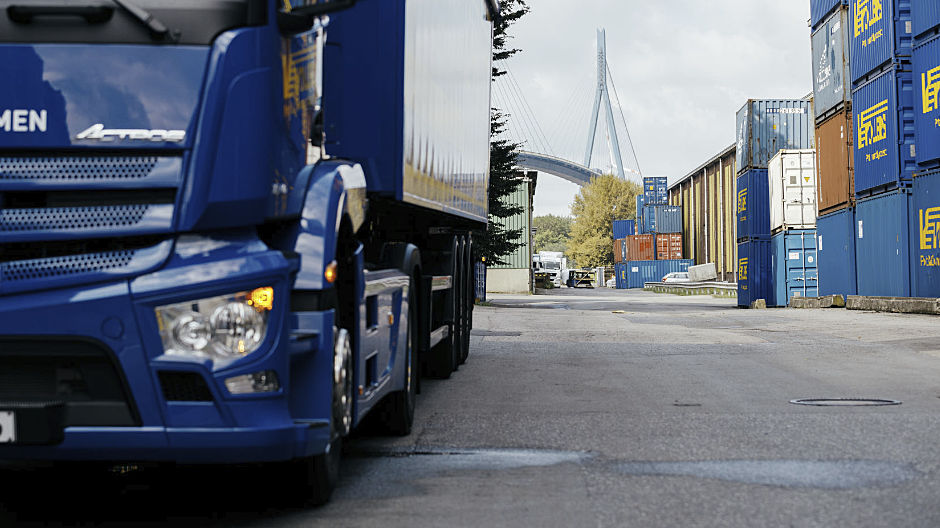
The roller shutter to hall 3 opens up. Andreas Cornelsen takes his foot off the brakes and lets the Actros slowly roll into the warehouse. A fragrant haze immediately makes its way in through the window and awakens childhood memories: hot chocolate, baking biscuits… the first thought: there must be tonnes of chocolate here.
There really are "tonnes" here, albeit tonnes of cocoa beans. In all, several thousand tonnes of the tasty raw material are stored here by haulage firm Vollers Hamburg GmbH in what used to be a shipbuilding hall next to the Köhlbrand Bridge in Hamburg. The beans originate from Ghana and Togo, the Ivory Coast and Nigeria. They aren't delivered in traditional hessian sacks, rather they arrive as bulk goods. At first glance, you might be forgiven for mistaking the raw cocoa beans for large pieces of gravel. That is, if it weren't for the scent in the air.
Meanwhile, Andreas steers his Actros onto the weighbridge. His breakfast was six hours ago and he's been out and about since then, but you wouldn't know: he energetically jumps down from the cab, greets one of the warehouse staff and winds back the tarpaulin over his tipper.
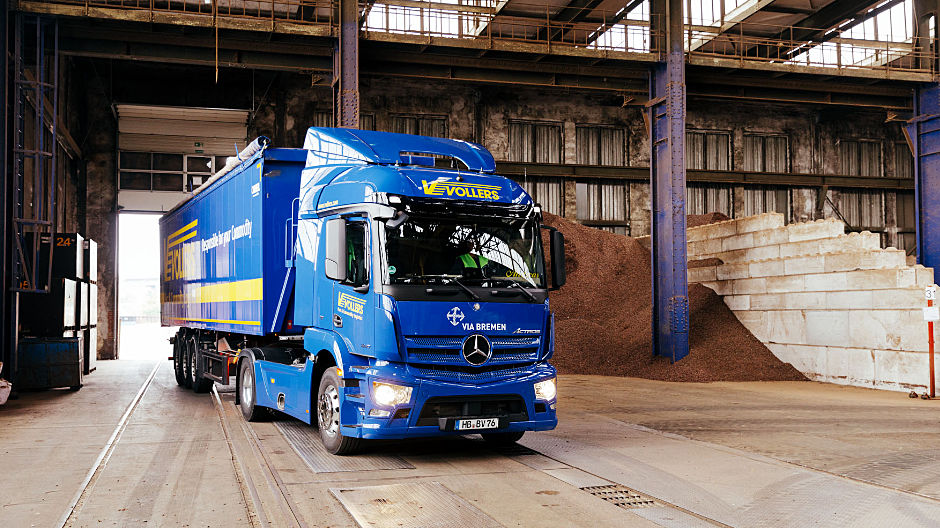
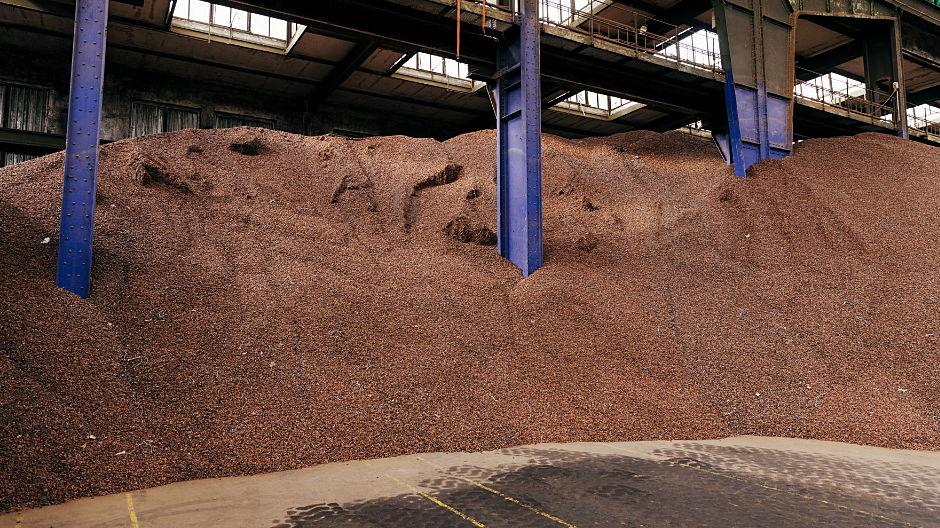
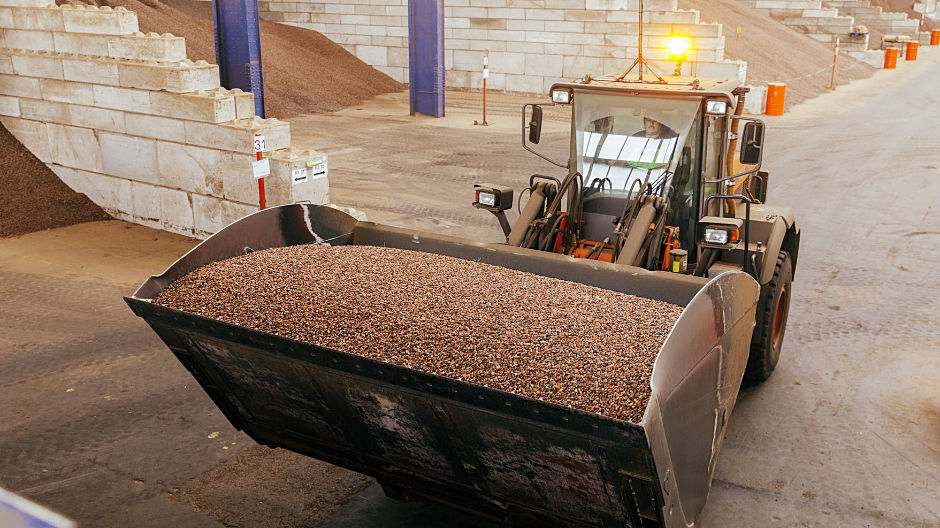
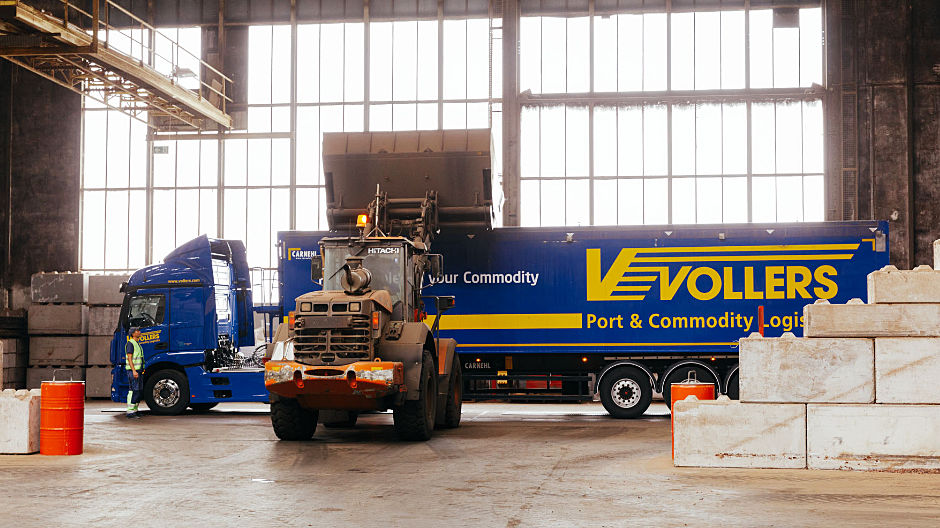
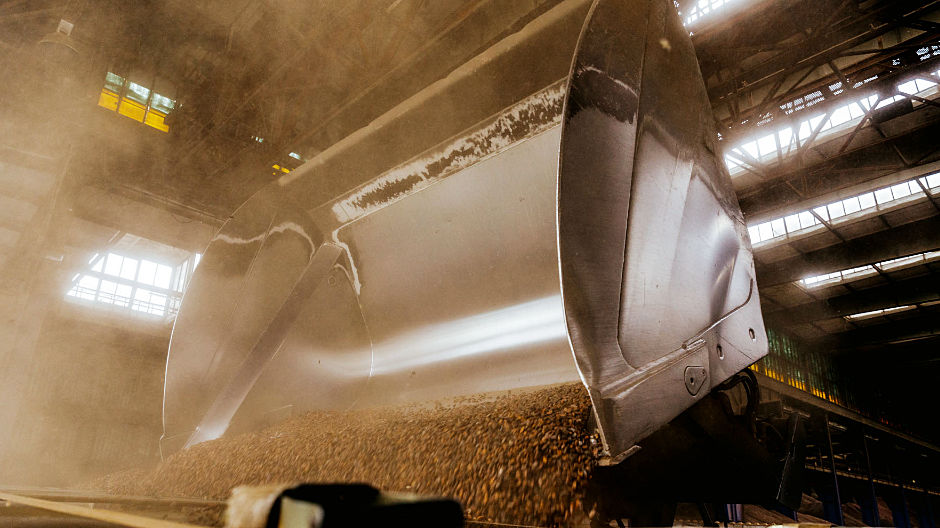


Three tonnes of cocoa per bucket load.
A wheeled loader is already on standby. Its huge bucket scoops up three tonnes of cocoa beans in one load. "It was purpose-built for the job. It's almost twice as big as a sand bucket because cocoa only weighs around 500 grammes per litre," says Andreas. The beans rattle down into the tipper semitrailer and as a result of the increasing amount of friction between the cocoa beans, that fragrant haze from earlier fills the hall again. The wheeled loader drives back and forth just a few times and loads 25 tonnes of the delicious cargo into the trailer.
Andreas enters the details of his freight on his time-monitoring device. A few hours ago, he was in Bremerhaven with a load of coffee beans. After a quick change of trailer everything was ready to transport the raw cocoa.
Andreas clocks up around 50 000 kilometres per year, mostly between Bremen and Hamburg, as well as regularly to companies in the Ruhr region. Such routes allow the father-of-two to spend evenings with his family. The fact that he often has to get out of bed at 3 a.m. doesn't really bother him though. "You quickly get used to it," he says with a smile.
Since 1999 the trained electrician has been driving trucks and has worked at Vollers since 2013: "I've always driven Mercedes-Benz vehicles. At the beginning, I still had an SK." A few weeks ago, he picked up his Actros 1840 in Wörth. Vollers replaces their tractor units every four years.
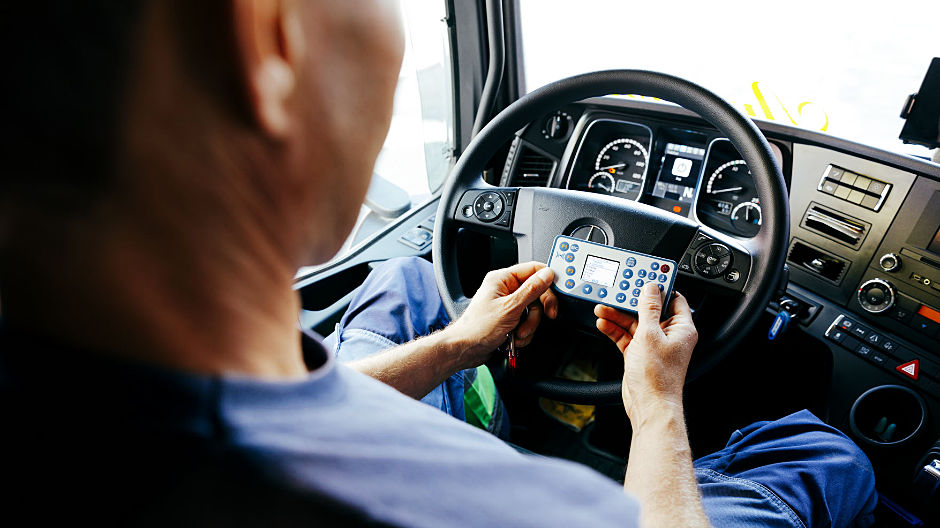


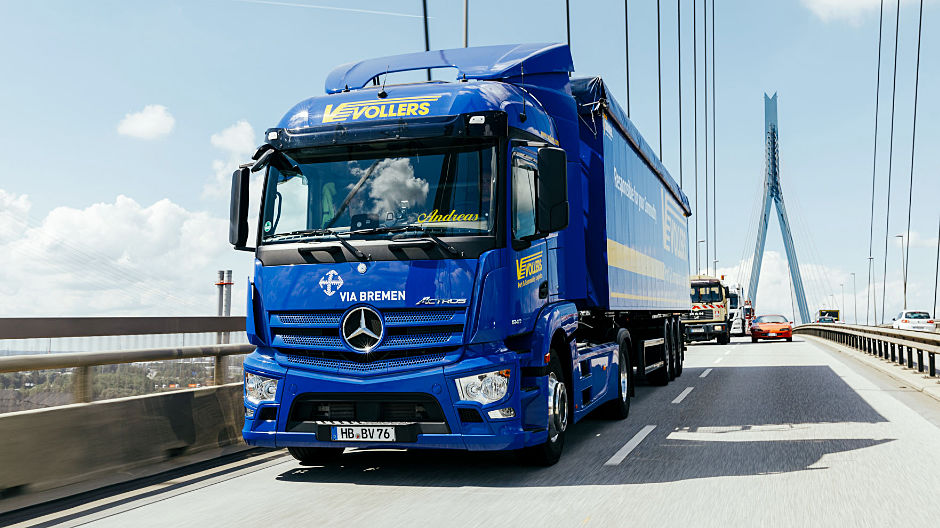
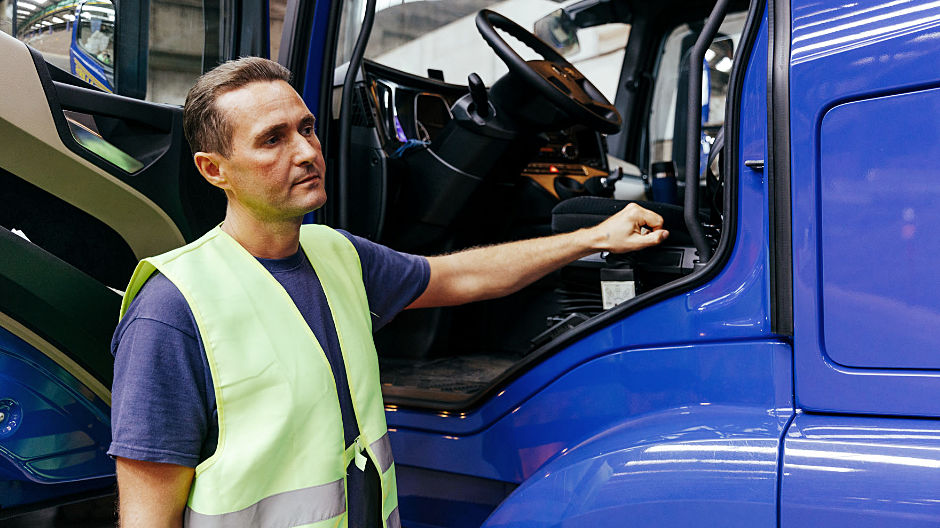
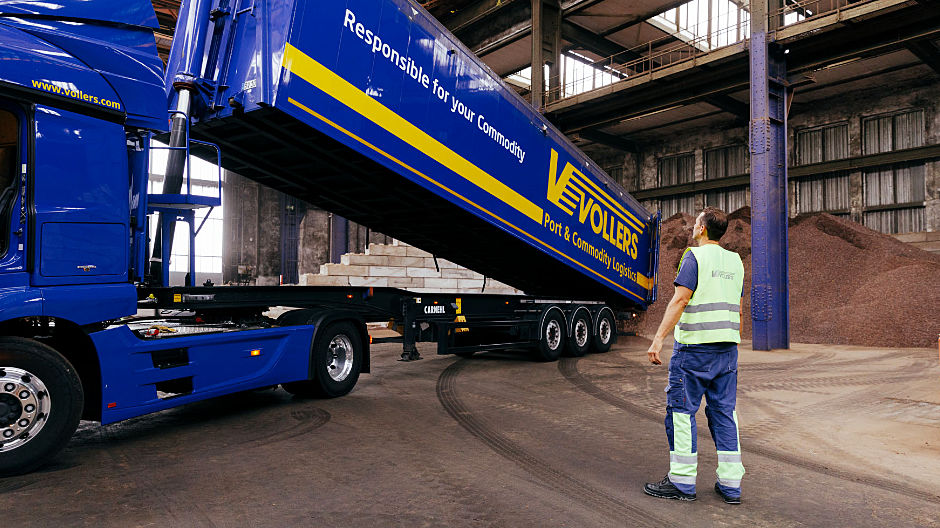
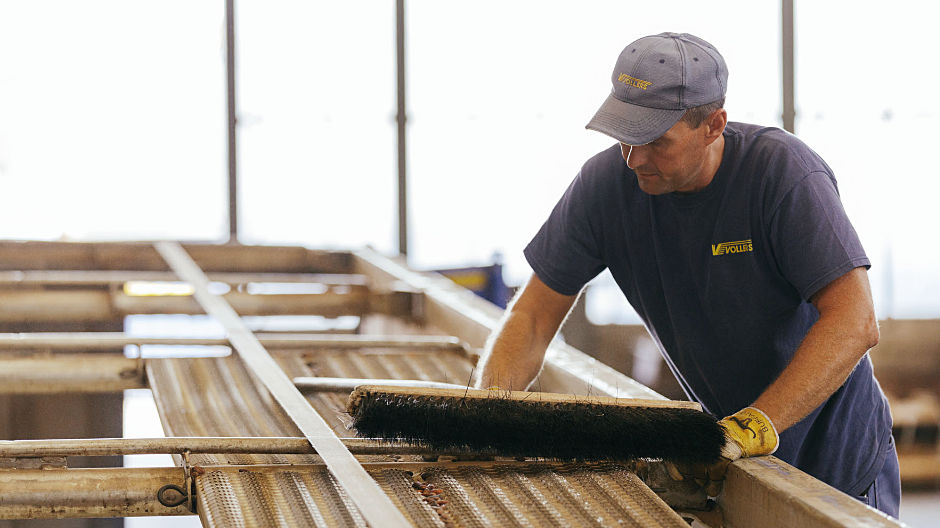
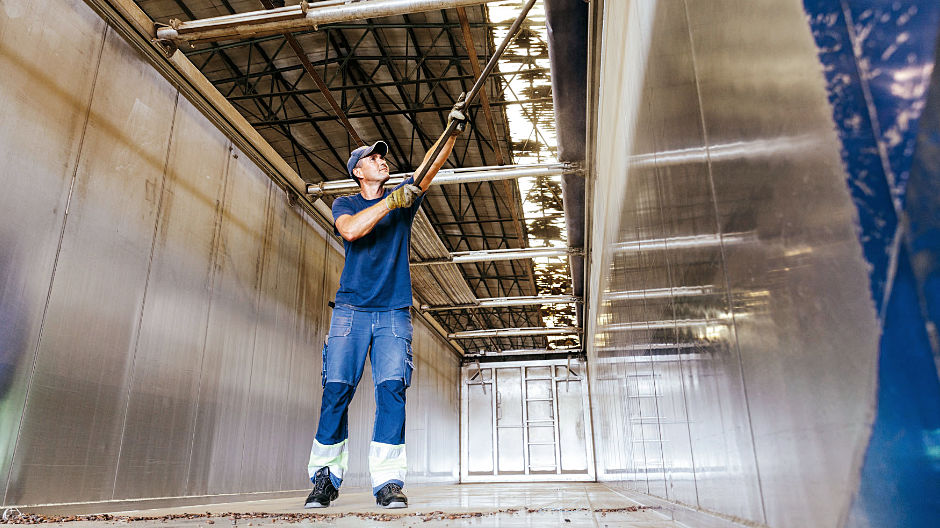
High demands – on everything.
The demands placed on technology and appearance are high. As too are those placed on the drivers: Andreas and his colleagues take part in training courses where they learn how to differentiate the various cocoa varieties from one another as well as how to recognise damage caused by moisture, breakage or foreign substances. "We train our drivers to keep a critical eye on the condition of their trailer," says Marco Franz, who has now also arrived in the warehouse. At Vollers Hamburg GmbH, Franz is responsible for raw coffee, raw cocoa and metals.
Meanwhile, Andreas' Actros has been loaded. The next three trucks are waiting in front of the weighbridge. Time for a final brief chat with the warehouse employee who hands Andreas the weigh-in documentation. And then it's back in the direction of the Köhlbrand Bridge. The destination is just a few kilometres away: a cocoa processing plant for which Vollers provides just-in-time deliveries. 24 hours a day, 365 days in the year.
In hall 3, next to the raw cocoa beans of the processing plant, there are also cocoa beans stocked here which are traded on the London Stock Exchange. As it can take quite a while until they are processed, it is particularly important that the containers are emptied as quickly as possible after their two to four weeks of sea transport. This helps maintain the quality of the beans. "We carry out visual checks and sampling tests to make sure that temperature differences, insects or mould have not taken their toll on the product," says Franz. The samples obtained are then sent to the customer as a goods-in sample which can then be inspected in their labs too.
"Getting up at 3 a.m.? You quickly get used to it."
Andreas Cornelsen, driver at Vollers
110 percent separation of product types.
At lunch time in the break room of Vollers. Andreas is back and gets himself a well-earned coffee. Before making the return journey to Bremen, he will professionally clean the tipper bucket, create a cleaning protocol and have it checked. "Tomorrow, I'm transporting coffee again, so I need to make sure the semitrailer is 110 % clean. Vollers is known in its sector for its quality, and of course I'm also jointly responsible for that," says Andreas.
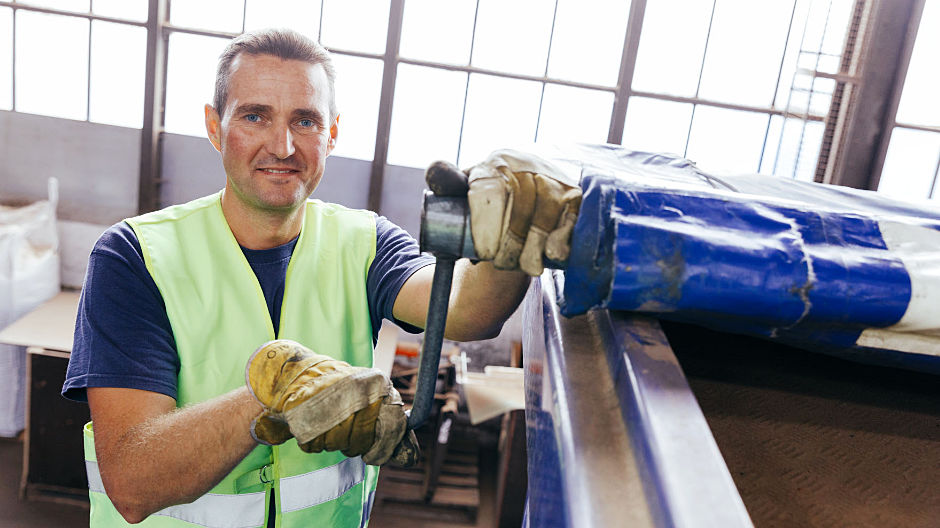
From cocoa to chocolate.
After harvesting, the beans are scraped out of the cocoa fruit and put in wooden boxes or covered with banana leaves and left to ferment naturally for around six days. At temperatures of up to 50 degrees Celsius, the first aroma substances start to appear. The beans can then be exported. Once they arrive in the production facilities, the beans are cleaned, peeled, roasted and broken up. The cocoa splinters are known as "nibs" and then move on to ball mills or roller systems. This stage achieves two things: all components are ground down to at least 25 thousandths of a millimetre, so that they don't have a sandy texture on the tongue and that the cocoa butter is released from within the plant cells. The cocoa nibs become a fluid cocoa mass.
The cocoa butter is separated from the solids by applying high pressure. The solids are then finely ground again before being mixed back with cocoa butter, sugar, milk powder and other ingredients depending on the recipe. This mix is essentially chocolate, albeit with a very bitter and somewhat sour taste. That's why the mass is then "conched". This involves stirring in open containers for at least six hours (and often much longer) at temperatures of up to 90 degrees Celsius. Any residual water and the unpleasant taste are removed by means of evaporation and each individual particle of powder is covered with a fine layer of cocoa butter – this is important for the melt-in-your-mouth factor.
Then, the chocolate is cooled, gently warmed back up and subsequently cooled back down in order for it to develop its familiar silky shine.
Photos: Christoph Börries, iStock – fcafotodigital, iStock – deyangeorgiev




Comment
Please log in to post a comment.
3 comments
Schokolade esse ich gerne. 10min...15min andauernden Schokolade-Geruch - das ist ja beinahe Folter...😄😜
Gruß
Klaus
Schokolade esse ich gerne. 10min...15min andauernden Schokolade-Geruch - das ist ja beinahe Folter...😄😜
Gruß
Klaus